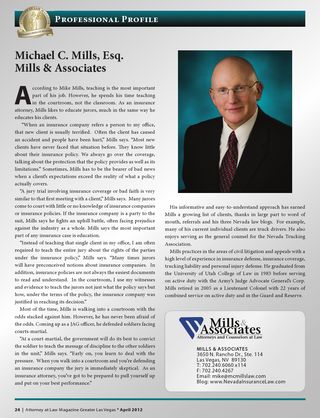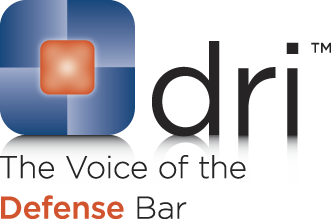Most lawyers can recite by memory the number of years available under statute to bring certain types of lawsuits. In Nevada, the statutes of limitation are found in Chapter 11 of the Nevada Revised Statutes.
Since insurance policies are contracts, the right to bring an action for breach of a policy is generally limited to six years. See NRS 11.190(1)(a). In Grayson v. State Farm Mut. Auto. Ins., 971 P.2d 798 (1998) the Nevada Supreme Court faced the question of the when this six-year statute of limitations began to run on Ms. Grayson’s uninsured / underinsured motorist dispute.
On June 12, 1990, Plaintiff Grayson was hurt in a motor vehicle accident. It wasn’t until August 2, 1996 that Grayson got around to filing suit against her UIM carrier State Farm. She alleged that the value of her injuries exceeded the $15,000 policy limit of the tortfeasor’s liability policy. State Farm moved for summary judgment arguing that the statute of limitations clock had started running on the date of the accident and thus, the six-year limitation of actions had expired. The District Court granted summary judgment in favor of State Farm.
The Nevada Supreme Court saw things differently. The Court ruled that a claim for breach of contract did not arise until the claimant called on the insurer to satisfy its duties under the contract and thereafter the insurer failed to do so. The court explained that “it would be illogical to begin the statute of limitations before the insured even has a justiciable claim for breach of contract. See Allstate Ins. Co. v. Spinelli, 443 A.2d 1286 (Del. 1982).”
The Court pointed out that until the insurance company failed to perform, it would be unfair to time-bar an insured from compensation. The Court also said that that its holding was consistent with the public policy behind the UM / UIM legislation. The court said:
We note that “[t]he Nevada Legislature intended that uninsured and underinsured motorist benefits be available to Nevada citizens.” Mann v. Farmers Insurance Exchange, 108 Nev. 648, 650, 836 P.2d 620, 621 (1992) (citation omitted). UIM insurance serves an important public purpose to “provide maximum and expeditious protections to the innocent victims of financially irresponsible motorists . . .” Green v. Selective Insurance Co. of America, 676 A.2d 1074, 1078 (N.J. 1996).
The Court then addressed the foreseeable issue of possible prejudicial impact to insurance companies based on the Court’s ruling. The Court commented that an insurer may protect against prejudice by including time limitations in the insurance contract itself. In addition, the insurance company may rely on the remedy of laches to address an insured’s unreasonable delay in filing a claim. Nevertheless, the Nevada Supreme Court concluded that the six-year statute of limitations will not begin to run until the UIM carrier has been called upon to perform and has failed to do so.
If you have questions regarding UM / UIM claims, please give Mike Mills a call at Mills & Associates at 702-240-6060.
 Follow
Follow Email
Email


